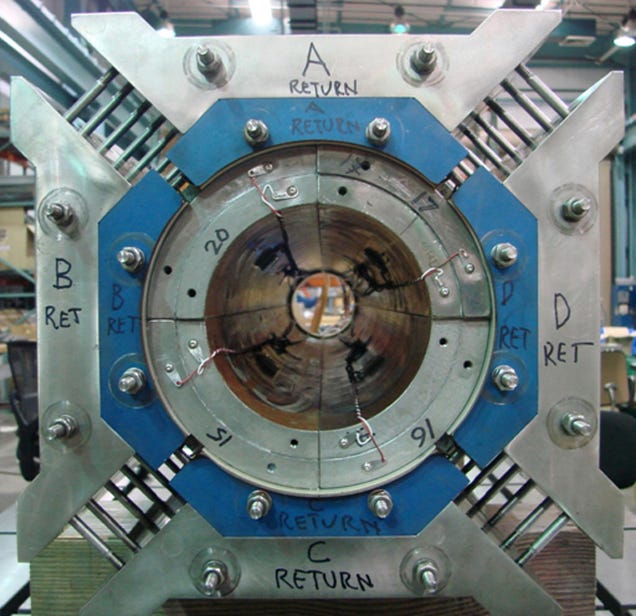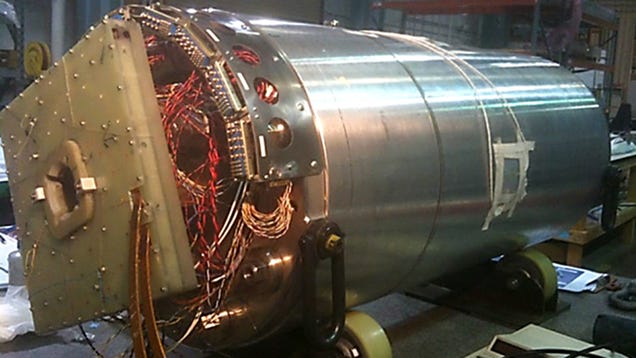These Quadpole Super Magnets Will Increase the LHC's Power Tenfold
10,946
Just because Cern researchers discovered the Higgs Boson particle
last year doesn't mean it's time to close up shop on the biggest
scientific instrument humanity ever created. Instead, the scientific
community has plans to upgrade and retrofit the Large Hadron Collider
with bigger, better, and more powerful systems over the next decade—like
the US LHC Accelerator Program's (LARP) new interaction region
quadrupole magnets (IRQM) that will help tease every last one of the
Higgs-Boson's secrets.
Particles
come together in one of four Interaction Regions (IR) within the Large
Hadron Collider. The number of iterations generated from each collision
(of which you want as many as possible) is known as the integrated
luminosity. Cern hopes to increase the collider's integrated luminosity
by 10x over the next decade (known as the High Luminosity LHC project),
but the process is technically challenging to say the least. Much of the
the equipment currently installed on the LHC is definitely powerful
enough for the current level of experiments conducted there, but just
won't cut it for higher-energy experiments in the future. Take the
IRQMs, for instance.
On either
immediate side of the interaction region is a quadrupole magnet
(quadrupole as in "four poles"). These devices help focus the particle
beams towards each other by generating a massive electromagnetic field.
The current generation of IRQMs are built from niobium titanium, the
Methuselah of superconducting materials, and that from which almost all
superconducting material technologies are built. Problem is, niobium
titanium isn't strong enough to endure the massive temperatures and
radiation produced by the higher energy experiments necessary for
deciphering the Higgs-Boson. And any tiny failure within the structure
of the magnet itself will nix its superconducting ability and the
torrent of protons flowing through the material will stop instantly
(this is called a "quench" and is roughly equivalent to crossing the
streams).
But the new
IRQMs from LARP are different. Dubbed the HQ02a (which stands for
something even more complicated), they're built from niobium tin. This
next-gen superconducting material is designed, as all magnets at the
LHC, to run in a helium superfluid cooled to near absolute zero. But
unlike the earlier models, the HQ02a not only operates at a much higher
magnetic field, it also features a larger aperture (120 mm vs 70mm), a
much wider operating temperature margin, and can better withstand the
IR's intense radiation levels, which is only going to increase as the
systems integrated luminosity jumps as well. In all, the HQ02a's
superconducting coils can pump out 12 tesla, that's a 50 percent
increase.

The only
problem with niobium tin is that it's so brittle. The material has a
tendency to crack under the intense strain of its electromagnetic field.
To counteract this fault, engineers at LARP developed a thick, aluminum
shell structure to help support the magnet while under load.
“This is a
major step forward in reaching our ultimate goals,” said Bruce Strauss,
LARP program manager, in a press statement. “It should not be regarded
as a single accomplishment but rather the realization of a significant
number of individual goals in the design, construction, and testing of
Nb3Sn beam-line magnets.”
There's no
word on when this specific part will be implemented, but ten years to
unlock one puny secret of the universe seems an interminable wait. [Berkeley Lab]

No comments:
Post a Comment